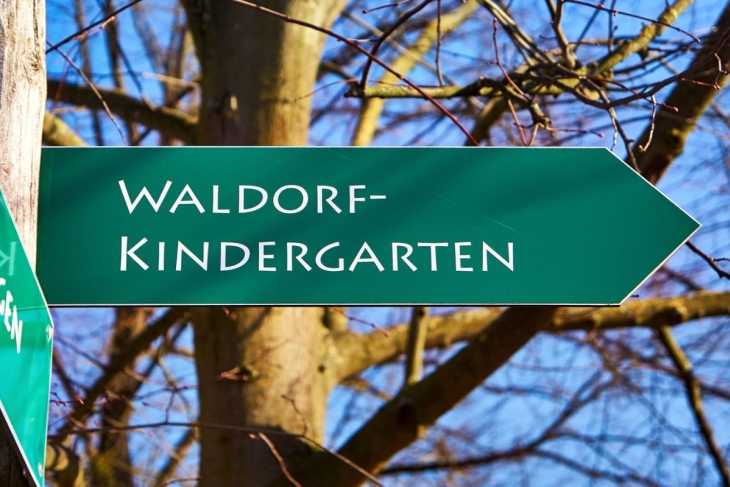One reason why parents choose to enroll their children in schools other than their assigned district is the opportunity to access alternative educational models. The question of whether these models benefit students academically is difficult to answer empirically, given the “selection effects” which make apples-to-apples comparisons between non-traditional schools and their traditional district counterparts hard to come by. But a new report from Frontiers in Education tries to cut through some of the differences and directly compare one well-known non-traditional model to its public school counterparts.
The pedagogy in question is Waldorf education. This 100-year-old schooling model is based on the teachings and principles of German artist and scientist Rudolf Steiner. It focuses on the developmental progress of children and their intellectual needs at various stages, with a heaping helping of art, music, and creative exploration built into all subject areas. According to Waldorf precepts, its teachers “are dedicated to generating an inner enthusiasm for learning within every child. This eliminates the need for competitive testing, academic placement, and rewards to motivate learning and allows motivation to arise from within.” Digital technology is also absent.
Waldorf schools in the United States are usually private—thereby facilitating the decreased emphasis on testing—but some of them are public. In fact, sixteen Waldorf institutions in California are public charter schools that must adhere to state testing requirements. Researcher Kimberly Telfer-Radzat of the University of California, Irvine, leverages the existence of these schools to compare their student achievement results to those from two other student groups: non-Waldorf charter schools in the state, and all other public schools combined (which includes the non-Waldorf charters and traditional districts). Achievement is measured by the California Assessment of Student Performance and Progress (CAASSPP) for grades three through eight in both ELA and math. Data come from spring test administrations between 2015 and 2019. In fact, the data here are all “archival” and not part of a specific experiment. The paper uses the terms “treatment” and “control”, but these are not really apt. More on this methodology in a moment.
In the final analysis, compared to the universe of non-Waldorf public schools (both district and charter), the Waldorf charters significantly underperformed in both ELA and math every year between third and sixth grade. For example, while more than three quarters of non-Waldorf third graders met or exceeded state standards in math, only half of Waldorf third graders did so. For third grade ELA, 73 percent of non-Waldorf students met or exceeded state standards, compared to 61 percent of Waldorf students. However, the picture changes in seventh grade, with Waldorf students notching big gains in both subjects and outscoring the non-Waldorf comparison group by a small margin. The observed Waldorf advantage expands to nearly five percentage points in eighth grade, both because the Waldorf student group continues to improve and because the non-Waldorf group’s proficiency declines. When the comparison is restricted to charter schools only—Waldorf versus non-Waldorf—a similar pattern emerges: sizeable lags in both subjects for Waldorf students in the early grades until a reversal begins in seventh grade, though the gaps between groups are generally smaller.
Telfer-Radzat notes several limitations of her methodology, including the fact that there are significantly fewer students in grades seven and eight than in the lower grades at the Waldorf schools. These droppers could easily be the students performing least well in the school, which could skew the results in such a model. More importantly, though, is the model itself. Telfer-Radzat is able to control for classroom size and low-income status of students in her final equations, but that’s the extent to which the widely-varying nature of the schools in question can be compared. For just one likely-relevant example, the Waldorf charters enrolled a mere 4 percent English learners (EL). By comparison, details from EdData show EL students comprising nearly 20 percent of California’s K–12 population in 2019–20. Those are big differences between schools wholly unaccounted for in the math.
Impacts of the unconventional pedagogy could be part of the mechanism driving the observed outcomes, but there’s plenty of room to question the findings. Still, one imagines that Waldorf practitioners, devotees, and inquisitive non-believers will come away from this report feeling positively disposed to the unusual pedagogy. And while it does seem to bear fruit for many of its initiates, the experimental jury is still out on the Waldorf vision of a quality education.
SOURCE: Kimberly Telfer-Radzat, “Exploring alternative education: a comparison on 3 levels—Waldorf charters, non-Waldorf charters, and local public schools, as measured by the California Assessment of Student Performance and Progress,” Frontiers in Education (June 2024).




